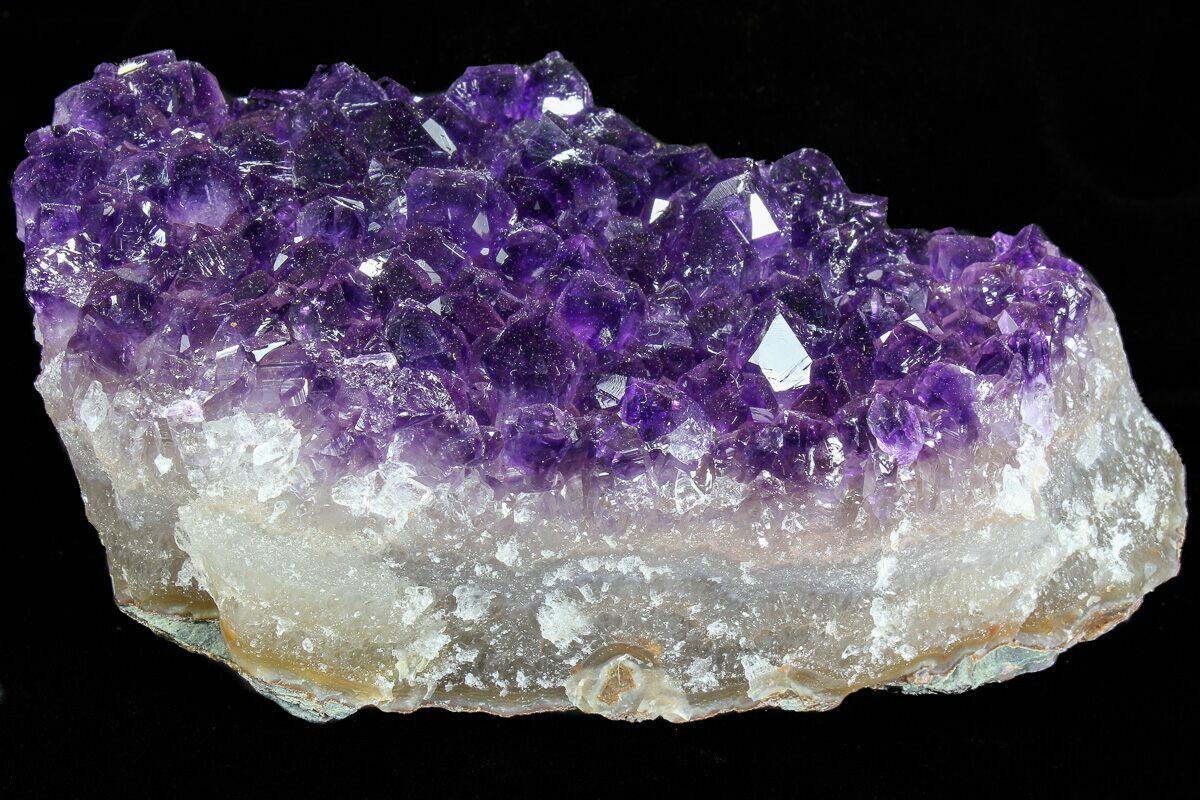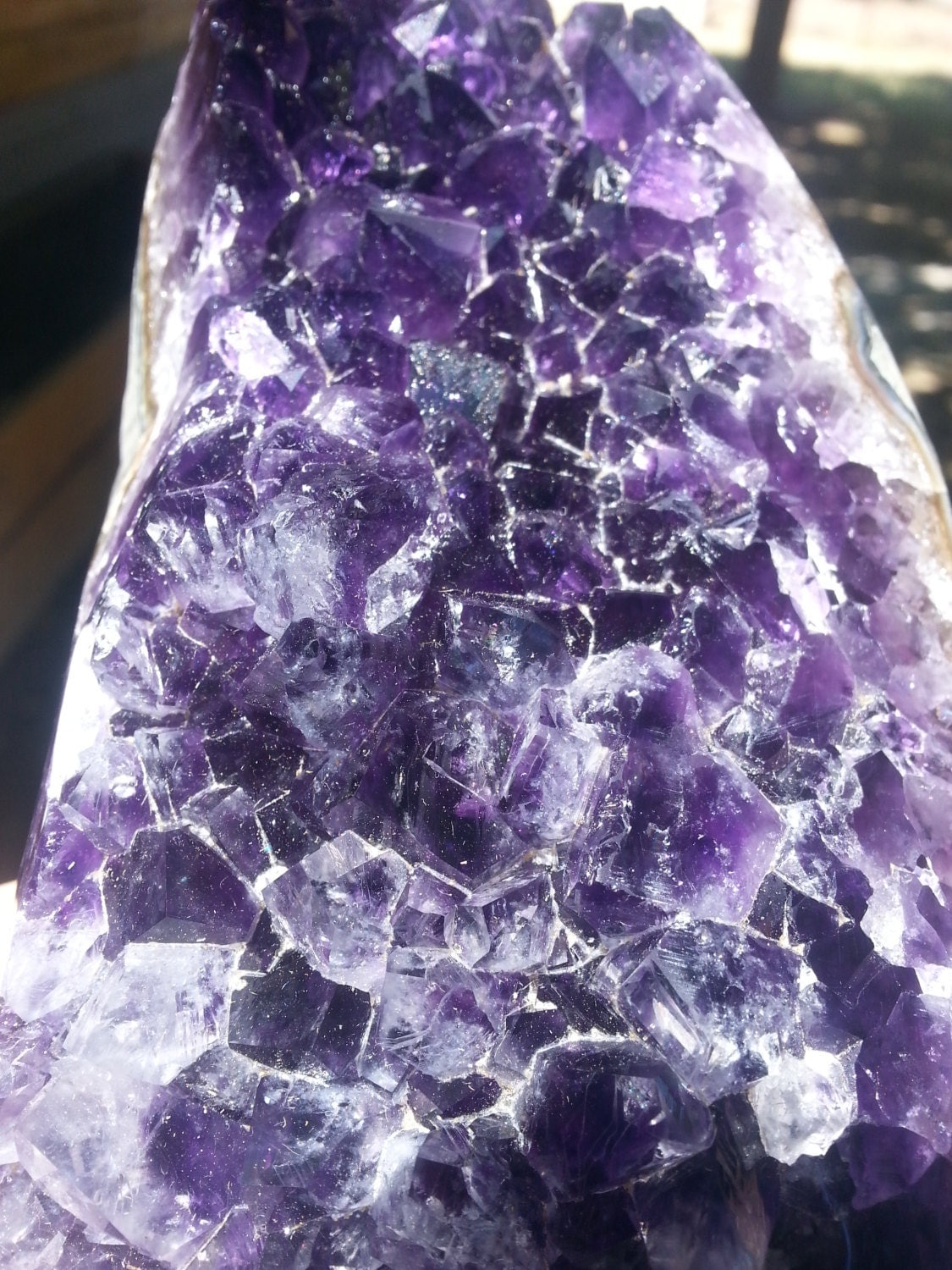

Specific gravity is a term used by jeweler's to ascertain the rough density of a gem. X Trustworthy Source Gemological Institute of America Nonprofit institute responsible for gemological research and education and setting gemstone buying and selling standards Go to source Authentic amethyst may have some color zoning, which can lessen its value, that's typically visible when the gem is laid flat on a white surface. X Research source This may occur in amethyst gems.

Some amethyst gems may be so light there is only a light purple glimmer. Some gems may have a slightly reddish undertone, but should still remain primarily purple. Window = 'AOuZoY6U9N-c9GisCVTWtYb4eq5iQNNlUg:1686776048205' _WidgetManager._Init('//_WidgetManager.Check the color.
:max_bytes(150000):strip_icc()/gi-amethyst-points-58b9786d5f9b58af5c495a9a.jpg)
Read also: What Is Druzy, and How Does It Form? Bloodstone: Interesting Facts About Heliotrope What Is Pseudomorph Mineral? Amethyst can fade in tone if overexposed to light sources, and can be artificially darkened with adequate irradiation.

The ideal grade is called "Deep Siberian" and has a primary purple hue of around 75–80%, with 15–20% blue and (depending on the light source) red secondary hues. The best varieties of amethyst can be found in Siberia, Sri Lanka, Brazil and the far East. Amethyst may exhibit one or both secondary hues, red and blue. Amethyst occurs in primary hues from a light pinkish violet to a deep purple. The color of amethyst has been demonstrated to result from substitution by irradiation of trivalent iron (Fe 3+ ) for silicon in the structure, in the presence of trace elements of large ionic radius, and, to a certain extent, the amethyst color can naturally result from displacement of transition elements even if the iron concentration is low. You need to have quartz that contains the right amounts of iron and then is subjected to enough natural radiation to cause the color centers to form. This 4+ iron absorbs certain wavelengths (357 and 545 nanometers) of light causing the amethyst color. Gamma ray radiation ( from nuclear decay in the surrounding rocks ) can knock an electron from an iron lattice site and deposit the electron in an interstitial iron. The iron is usually in the 3+ valence state. Some of this iron sits in sites normally occupied by silicon and some is interstitial ( in sites where there is normally not an atom). Quartz will commonly contain trace amounts of iron ( in the range of 10's to 100's parts per million of iron).


 0 kommentar(er)
0 kommentar(er)
